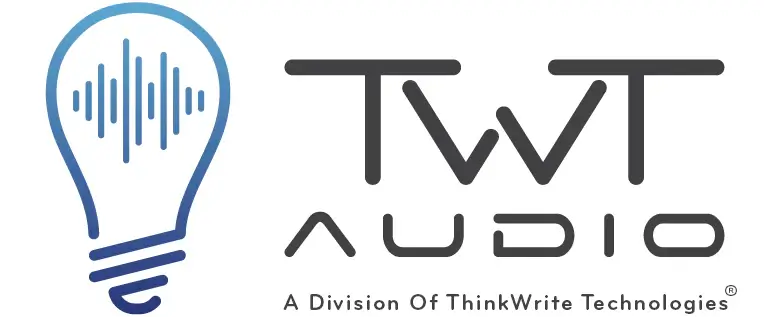The gaming industry has consistently evolved, pushing the boundaries of technology to create immersive and engaging experiences for players. One of the latest innovations in this space is the introduction of force-sensitive keyboards, brought to us as Hydra by Peratech. This technology promises to revolutionize how gamers interact with their virtual environments. By integrating force-sensing technology into keyboards, developers have opened up new avenues for gameplay that enhance precision, control, and overall enjoyment.
Force-sensitive keyboards enhance gaming experience
At the heart of this innovation is the concept of haptics, which provides tactile feedback to users as they interact with their devices. Traditionally, keyboards have relied on simple key presses that register as binary inputs – either a key is pressed or it isn’t. This limitation can hinder a gamer’s ability to execute nuanced actions, especially in fast-paced or competitive scenarios. However, force-sensitive Hydra keyboards allow players to apply varying degrees of pressure, translating these subtle differences into distinct in-game actions. For instance, pressing a key lightly might result in a gentle acceleration in a racing game, while applying more force could trigger a rapid burst of speed. This ability to modulate actions based on pressure adds a layer of depth to gameplay that was previously unattainable with standard keyboards.
The implications of Hydra’s force-sensitive technology extend beyond just racing games; they can enhance various genres, including first-person shooters, role-playing games, and simulation games. In a first-person shooter, for example, a player could control the sensitivity of their weapon’s fire rate by adjusting the pressure applied to the keyboard. This level of control can lead to more strategic gameplay, allowing players to execute complex maneuvers that require precise timing and execution. Similarly, in role-playing games, force-sensitive inputs could enable players to perform intricate spellcasting or character movements, enriching the gaming experience and making it more engaging.
Enhanced workflows for artists and creators
Beyond gaming, the applications of force-sensitive technology extend into the realm of creativity. Designers and creators can utilize the same principles to manipulate digital tools with greater precision. For example, in software like Adobe Premiere or Photoshop, users can adjust color, brightness, or other parameters by varying the pressure applied to the keyboard. This level of control enables artists to express their creativity more fluidly, making the act of creation feel more organic and less mechanical. The podcast emphasizes that while the primary showcase may be gaming, the technology is equally valuable for creative applications, demonstrating its versatility.
The customization capabilities of Hydra’s keyboards further enhance their appeal. Users can create personalized profiles tailored to specific applications, allowing for a unique interaction that suits their individual workflows. The ability to program different zones on the keyboard for specific functions-such as undo or copy/paste-streamlines the creative process, making it more efficient. Additionally, the prospect of a community-driven ecosystem, where users can share and modify profiles, fosters collaboration and innovation among creators.
Zero latency enhances creative workflows
The concept of zero latency refers to the immediate response of a device to user inputs, eliminating any delay that might hinder a user’s workflow. In the discussion, Don Baine and Paige Raynes from Hydra delve into the practical applications of this technology, particularly in the context of multimedia production. For instance, the guest, a production company owner, shares their experience with beat synchronization in slideshow software, highlighting the challenges posed by traditional input methods. The existing software often fails to synchronize visuals with audio accurately, leading to frustration and inefficiency. However, with a zero-latency device, the guest envisions a solution that could significantly improve this process. By creating a profile tailored to their specific software, they could achieve precise control over timing and synchronization, allowing for seamless integration of visuals and audio.
The implications of zero latency extend beyond mere convenience; they fundamentally change the creative workflow. For artists, designers, and content creators, the ability to execute commands without delay allows for a more intuitive and fluid creative process. The podcast emphasizes that this technology is designed to be user-friendly, enabling individuals to customize their experience according to their unique needs. This adaptability is crucial for professionals who often work with complex software that requires quick and accurate inputs. By reducing the learning curve associated with new technology, zero-latency devices empower users to focus on their creative vision rather than the limitations of their tools.
Conclusion: Force-sensitivity is a welcome addition to keyboards
The Hydra force-sensitive keyboards, introduced by Peratech, are set to revolutionize gaming by allowing players to apply varying levels of force to keys, adding a new layer of finesse and control. This technology benefits advanced gamers by enhancing their reaction time and skill, while also making it easier for novices to get into gaming without learning complex key combinations. The Hydra technology is already available on some Lenovo Legion laptops, with more devices coming in the future.
Interview by Don Baine, The Gadget Professor.
Get $5 to protect your credit card information online with Privacy.
Amazon Prime gives you more than just free shipping. Get free music, TV shows, movies, videogames and more.
The most flexible tools for podcasting. Get a 30 day free trial of storage and statistics.
Podcast: Play in new window | Download
Subscribe: Apple Podcasts | RSS | More


 During CES 2024, we got to take a look at the latest version of the
During CES 2024, we got to take a look at the latest version of the  Videogame streaming has become a major part of the entertainment industry. In our offices, you can almost always find at least one Twitch stream running with one of the popular streamers. As the industry grows, new issues are introduced. For example, the RIAA has recently discovered what’s going on with Twitch and
Videogame streaming has become a major part of the entertainment industry. In our offices, you can almost always find at least one Twitch stream running with one of the popular streamers. As the industry grows, new issues are introduced. For example, the RIAA has recently discovered what’s going on with Twitch and  We all know that there are many choices out there when it comes to the headphone market, but few companies try to be as customizable as possible or try to balance affordability with high-quality audio. You’re usually going to get quality sound with a decent design and a high price tag, or an affordable price with stale audio and LED lights to distract you from its flaws.
We all know that there are many choices out there when it comes to the headphone market, but few companies try to be as customizable as possible or try to balance affordability with high-quality audio. You’re usually going to get quality sound with a decent design and a high price tag, or an affordable price with stale audio and LED lights to distract you from its flaws.  Too often these days, we are forced into places that are not conducive to conversation. This is exacerbated when you’re on the phone or computer. This happens because microphones, in general, do not discriminate between sounds. These microphones pick up whatever sound they hear and push it to the other side of the call. In a loud area, this means it’s nearly impossible for the person on the other side of the call to hear anything you say. This is the problem that
Too often these days, we are forced into places that are not conducive to conversation. This is exacerbated when you’re on the phone or computer. This happens because microphones, in general, do not discriminate between sounds. These microphones pick up whatever sound they hear and push it to the other side of the call. In a loud area, this means it’s nearly impossible for the person on the other side of the call to hear anything you say. This is the problem that  Playing a videogame is intended to extend the experience of entertainment into a more personal connection. With a movie or TV show or even a play, you watch what is happening and pretend to put yourself into the action. With a videogame, however, you are in control over the experience – sometimes in small ways and others in large ways. However, we’re still generally separated from the game in a variety of ways, but
Playing a videogame is intended to extend the experience of entertainment into a more personal connection. With a movie or TV show or even a play, you watch what is happening and pretend to put yourself into the action. With a videogame, however, you are in control over the experience – sometimes in small ways and others in large ways. However, we’re still generally separated from the game in a variety of ways, but  In a world where technology is constantly pulling us indoors,
In a world where technology is constantly pulling us indoors,  Zach Sharpe, Director of Marketing at
Zach Sharpe, Director of Marketing at